2017 Emerging Creatives Student Summit
Theme
This year’s theme is WATER: New Directions Through Arts and Science. No community on this planet is without it’s water-based challenges. Water-centric grand challenges* are many, ranging from access and social justice issues in local and global contexts, to environmental degradation, to toxicological challenges, to saltwater incursion into freshwater, to sea level rise. Uniquely situated less than two hours from the Gulf Coast and from the Atlantic Ocean in an area known for its numerous freshwater springs, the University of Florida has great strength in local, regional, national, and international research and creative activity when it comes to these and other water-centric grand challenges.
This summit will feature panels and working group leadership from distinguished professor in the life sciences and the arts at the University of Florida, as well as leading artists and water scholars from around the country. Join us this coming February 8-11 to advance your own creative work or research through interdisciplinary collaboration with your peers at leading institutions across the U.S. Undergraduate and graduate students in any and all fields are welcome, particularly those that care about and have a deep interest in water and the environment. We especially encourage student research teams from biology, ecology, and related fields, as well as artists/designers, to apply.
About Emerging Creatives
The Alliance for the Arts in Research Universities (a2ru) Emerging Creatives Student Summits bring together students who have an interest in the arts, crossing disciplinary boundaries, and developing collaborative projects. Each year, 80-100 undergraduate and graduate students attend the summit from a2ru partner universities across the country, along with 12-15 administrators, faculty, and staff. These summits have a strong project-based component with activities such as panel discussions with special guests, keynote speakers, site visits or field trips, performances and exhibitions, networking opportunities, and “bootcamp” or skill-building experiences built in throughout to collaboratively tackle and solve grand challenges*.
*Grand challenges are ambitious but achievable goals that harness science, technology, and innovation to solve important national or global problems and that have the potential to capture the public’s imagination.
Featured Speakers
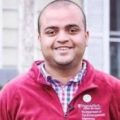

Anurag Mantha is a PhD student in the Charles E. Via Jr. Department of Civil and EnvironmentalEngineering at Virginia Tech. Anurag has a Bachelor of Technology in Civil Engineering from GITAMUniversity, India and a Master of Science in Environmental Engineering from Virginia Tech. His research interests lie in the field of drinking water. He has research experience in drinking water treatment and his master’s research was related to treating hexavalent chromium from drinking water.As part of his PhD, he is studying water infrastructure in the built environment, with a focus on hot water systems and premise plumbing and trying to optimize systems for energy performance in tandem with protecting public health.
He has been a part of the Flint Water Study team since its inception in August 2015 and has been involved with all aspects of the research group’s efforts in Flint. Outside of the department, Anurag is the president of the Indian Students Association and works as an investigator for the Graduate HonorSystem at Virginia Tech.


Chris is a PhD student in the Biology Department at the University of Florida, in the Kawahara Lab of the McGuire Center for Lepidoptera and Biodiversity at the Florida Museum of Natural History. His current research focuses on Philodoria, a group of rare, endangered micromoths only known from the rainforests of the Hawaiian Islands.
Beyond Chris’ work with Philodoria, his passions lie in wildlife photography, documentary videography, and graphic design – all tools that he uses to communicate unique and engaging media featuring the world’s imperiled tropical ecosystems and those working to save them. As a National Science Foundation Graduate Research Fellow and National Geographic Explorer, Chris strives to raise awareness about lesser-known taxa through a diverse array of conservation science multimedia.
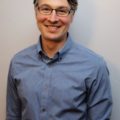

Dylan Klempner began interning for Arts in Medicine in 2010. A year later, he became an artist in residence serving primarily adults. A writer and interdisciplinary artist, Dylan uses a variety of media in his work with patients, caregivers, and staff.
In 2011, Dylan rolled out The Mobile Inspiration Station, a cart filled with art supplies–paint, small canvases, journals, pens, pencils, drawing paper, puzzles and games. He wheels these materials through the hospital, room-to-room, encouraging patients and their caregivers to take part in an activity. Dylan also offers writing workshops at Shands using the method taught by Amherst Writer’s and Artists.
In addition to his work in the hospital, Dylan writes for publication about the importance of art and creativity in everyday life. He has an MFA in Interdisciplinary Art from Goddard College, a BS in Entrepreneurial Studies from Babson College, and an MFA in creative nonfiction at Goucher College. His articles have appeared in a variety of magazines and newspapers across America, and he credits the literary e-zine, BraidedBrook.com with Russ Beck.


EDUCATION
Oxford University, NATO Post-Doctoral Fellowship, 1985
Cornell University, Ph.D., 1982, Dissertation: Natural history of lianas and their influences on tropical forest dynamics
University of Wisconsin, B.S. (Education/Biology), 1973
RECENT ACADEMIC AND RESEARCH POSITIONS
-
Professor, Department of Biology, University of Florida, 1992-present (Associate Professor 1987-1992; Assistant Professor 1982-1987)
-
Affiliate Faculty: School of Forest Resources and Conservation (SFRC): School of Natural Resources and the Environment (SNRE); Center for Latin American Studies; Center for African Studies
-
Senior Research Associate, Center for International Forestry Research (CIFOR)
AREAS OF INTEREST/RESEARCH
Conservation Biology, Tropical Forestry, Fire Ecology, Restoration Ecology, Economic Botany, Natural Resource Economics, Plant Ecology, Botany, Plant Biomechanics
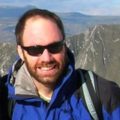

Jamie has very broad research interests that span the subdisciplines of physiological ecology, community ecology, and macroecology and evolution. He is interested in how physical constraints on the survival, growth and reproduction of individuals influence the ecology and evolution of communities and ecosystems. Most recently, he has been working to develop the metabolic theory of ecology dealing explicitly with the effects of body size, temperature and stoichiometry on ecological and evolutionary rate processes. In the coming years, he hopes to further develop these ideas using theoretical, experimental and field approaches.
REPRESENTATIVE PUBLICATIONS
-
Hein, AM, Hou C, and JF Gillooly (2012) Energetic and biomechanical constraints on animal migration distance. Ecology Letters 15:104-110.
-
Hou, C, Kaspari M, Vander Zanden HB, and JF Gillooly (2010) Energetic basis of colonial living in social insects. PNAS 107(8):3634-8.
-
Gillooly, JF and AG Ophir (2010) The energetic basis of acoustic communication. Proceedings of the Royal Society B 277:1325-1331
-
Gillooly, JF, Allen, AP, Brown, JH, and GB. West (2005) The rate of DNA evolution: Effects of body size and temperature on the molecular clock. PNAS 102:140-145.
-
Brown, JH, Gillooly, JF, Allen, AP, Savage, VM, and GB West (2004) Toward a metabolic theory of ecology. Ecology 85:1771-1789.
-
Allen, AP, Brown, JH, and JF Gillooly (2002) Global biodiversity, biochemical kinetics, and the energetic-equivalence rule. Science 297:1545-1548
-
Gillooly, JF, Charnov, EL, West, GB, Savage, VM and JH Brown (2002) Effects of size and temperature on developmental time. Nature 417:70-73.
-
Gillooly, JF, Brown, JH, West, GB, Savage, VM, and EL Charnov (2001) Effects of size and temperature on metabolic rate. Science 293:2248-2251
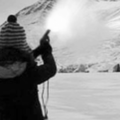

Janet Biggs is an American artist, known primarily for her work in video, photography, and performance. She lives and works in Brooklyn, New York. Biggs’ work often includes images of individuals in extreme landscapes or situations. She has captured such events as speeding motorcycles on the Bonneville Salt Flats, Olympic synchronized swimmers in their attempts to defy gravity, kayaks performing a synchronized ballet in Arctic waters, sulfur miners inside an active volcano, and a camel caravan crossing the Taklamakan desert of Western China. Her earlier work dealt with issues of psychosis and psychotropic drugs. Her latest project explores the creation and loss of memory from personal, physical, and scientific perspectives. In addition to videos, her recent work includes multi-discipline performances, often including multiple large-scale videos, live musicians, and athletes. Biggs received her undergraduate degree from Moore College of Art and pursued graduate studies at Rhode Island School of Design.
Her work has been featured in the first International Biennial of Contemporary Art of Cartagena, Colombia; the Musée d’art contemporain de Lyon, France; Vantaa ArtMuseum, Finland; Linkopings Konsthall, Passagen, Sweden; the OberosterreichischesLandesmuseum, Austria; Kunstmuseum Bonn, Germany; Museo d’arte contemporanea Roma, Italy; and the National Taiwan Museum of Fine Arts, Taiwan.
Reviews of her work have appeared in the New York Times, the New Yorker, ArtForum, ARTNews, Art in America, Flash Art, Artnet.com, and many others. Biggs is the recipient of numerous grants including the Electronic Media and Film Program at the New York State Council on the Arts Award, the Arctic Circle Fellowship/Residency, the Anonymous Was a Woman Award, and the NEA Fellowship Award.
Her work is in collections including Fonds Regional d’Art Contemporain (FRAC), Languedoc-Roussillon, France; the Zabludowicz Collection, London; Skulpturenmuseum Glaskasten Marl (Ruhr Kunst Museen), Marl, German; the Tampa Museum of Art, Tampa, FL; the High Museum, Atlanta, GA; the Herbert F. Johnson Museum of Art, Cornell University, Ithaca, NY; Mint Museum of Art, Charlotte, NC; the Gibbes Museum of Art, Charleston, NC; and the New Britain Museum of Art, New Britain, Connecticut.
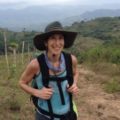

Laura Chessin is a graphic designer, artist, and videographer whose current body of work includes both documentary and expressive film exploring ecological issues and her personal relationship to the natural world. She is especially interested in how artists and designers can bring expressive and innovative ways to address issues associated with the Anthropocene, and to explore their own relationships with the natural world as both a foreign or familiar place.
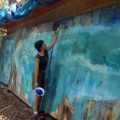

Margaret Ross Tolbert is an artist based in Gainesville, Florida. Over the last twenty years she has executed series of paintings, drawings and lithographs from studios in the U.S., France, and Turkey. Her commissions include projects for series of paintings with residencies in Turkey, Azerbaijan, and Oman, enabling her to continue her research for her series, Doors, and study of language and dance from the regions of the ancient trade routes. Another continuing focus is the Springs of North Florida, whose paradisiacal presence provides a sense of ideal destination and the exotic in the here- and-now that counterpoints the sense of passage, time and journey implicit in the Door paintings.
Recent exhibitions have included dance performances and animations presenting the energy of the creative act of painting, ethnic dance, and exploration of the springs and the creative process. These include ENERGY performances for Shands Arts in Medicine, Edsvik Konsthall, and Marten Pers Skalla in Sweden, and Festival of the Moving Image in Tampa.
In 2010, the book AQUIFERious was released, with art and writing by Tolbert with thirteen contributors. This amalgam of scientific insights woven into a catalog of Tolbert’s painting, writing, and performance about the springs, documents some of the many features, and urgent need for the preservation of Florida’s freshwater springs and the Floridan Aquifer. AQUIFERious received a gold medal in Florida non-fiction and a silver medal in fine arts from the Florida Book Awards. The book GEZI, with Tolbert’s narrative and sketches of travels in Eastern Turkey was released in 2006.
Tolbert is working toward a film on Springs in Turkey; an installation of hundreds of sketches for the Raffles Hotel, opening in Istanbul in 2013; and new springs paintings for a September exhibit at the Appleton Museum in Ocala. A group exhibit including her work at the American Embassy Residence in Ankara continues through 2012.
Tolbert received her BFA and MFA in painting from the University of Florida, where she studied under Hiram Williams. She also minored in Linguistics.


Nan Smith is known for her contemplative installations and figure sculptures, which synthesize sculpture -often life-size figures–with digital photomontages. Over the years, she has explored social narratives that reflect her interest in spirituality, nostalgia, and most recently, environmental issues.
Nan received a Bachelor of Fine Arts from the Tyler School of Art in 1974 and a Master of Fine Arts from The Ohio State University in 1977. She holds degrees in Ikebana and Japanese Tea Ceremony from the Japan House at the University of Illinois. Nan Smith’s installations and sculpture have been exhibited at SOFA Chicago, The American Museum of Ceramic Art in California, The Kentucky Museum of Arts and Crafts, The Appleton Museum of Art and in invitational exhibitions throughout the United States. Nan’s work is also part of many institutional collections, including The American Express Corporation; The Lamar Dodd Art Center; The Givat Haviva Institute’s Art Center in Israel; and the World Ceramics Exposition Korea International Collection in Ichon, Korea. She has been the recipient of four State of Florida Individual Artist Fellowship Grants, an NEA-funded Southern Arts Federation Fellowship in Sculpture, and a University of Florida Research Foundation Professorship. She has been awarded funded residencies by the Watershed Center for Ceramic Arts, and The Association of Israel’s Decorative Arts. Her sculpture has been presented in book chapters in: “The Figure in Clay” (Lark, 2005) and “World Famous Ceramic Artists Studios” (Hebei Fine Ats Publishing House, China, 2004); plus in feature articles in Ceramics Monthly, Ceramics: Art and Perception, Sculpture, World Sculpture News, China Ceramic Artist magazines.
Nan Smith served as the co-juror for the 2006 NCECA Regional Student Juried Exhibition in Portland, Oregon, and for Alchemy: from Dust to Form, The Ceramics National presented by the Samuel P. Harn Museum of Art in 2011. She has curated three CIE exhibitions for the National Council for Education in Ceramics Conferences. Smith was honored by the National Council for Education in the Ceramic Arts, NCECA as an Emerging Talent, in 1986.
Nan Smith has presented workshops on figure sculpting and mold-making throughout the United States, including the 1999 National Council on Education for the Ceramic Arts Conference. Nan Smith lives in Gainesville, Florida where she maintains her private studio and holds the position of tenured Full Professor within the Ceramics Program at the University of Florida’s School of Art and Art History.
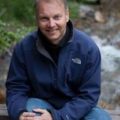

Robert Davies is a physicist and educator whose work focuses on synthesizing a broad range of Earth Systems science through a lens of human systems sustainability and planetary boundaries. Over the past decade Dr. Davies has developed and delivered hundreds of public lectures on climate change and human sustainability. He is also co-creator of The Crossroads Project, a communication project weaving together science, imagery and music, bringing to bear the power of performance art on the topic of human sustainability.
Dr. Davies is an Associate of the Utah Climate Center and adjunct professor in Utah State University’s Department of Plants, Soils and Climate. He has taught on the faculty of three universities; worked as project scientist for Utah State University’s Space Dynamics Laboratory; as technical liaison for NASA’s International Space Station project; and served as an officer and meteorologist in the United States Air Force.
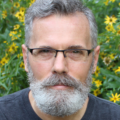

Terry Harpold is Associate Professor of English, Film, and Media Studies at the University of Florida. His research and teaching interests include science fiction and film, climate fiction and film, digital humanities, image-text studies, and psychoanalysis. He is a member of UF’s Digital Humanities Working Group, co-founder of the Science Fiction Working Group, and founder of UF’s “Imagining Climate Change” initiative, which brings together scientists, humanists, artists, and the public to imagine our collective futures in an age of global climate instability.
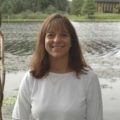

Wendy D. Graham is the Carl S. Swisher Eminent Scholar in Water Resources in the Department of Agricultural and Biological Engineering at the University ofFlorida and Director of the University of Florida Water Institute. She graduated from the University of Florida with a Bachelor’s degree in EnvironmentalEngineering. Her PhD is in Civil Engineering from the Massachusetts Institute ofTechnology. She conducts research in the areas of coupled hydrologic-water quality-ecosystem modeling; water resources evaluation and remediation; evaluation of impacts of agricultural production on surface and ground water quality; and development of hydrologic indicators of ecosystem status. She has served as PI or co-PI on over $17 million in grants and contracts, has supervised 30 doctoral and master’s thesis committees and has served on an additional 45 graduate student committees.
In the Press
a2ru brings science and creativity together at the University of Florida
By Casey Wooster
Over 120 university students and faculty members from across the country congregated together at the University of Florida College of the Arts for the 2017 Alliance for the Arts in Research Universities (a2ru) Emerging Creatives Student Summit. This year’s summit took place between February 8 and February 11 and focused around the theme of WATER: New Directions Through Arts and Sciences.
Being situated less than two hours from the Gulf Coast and Atlantic Ocean as well as numerous freshwater springs, the University of Florida offered a unique setting for this year’s summit. UF professors in the life sciences and arts partnered with water scholars and artists from around the country to collaborate with university students in panel discussions, group projects and field trips centered on issues and problems related to water.
“I would have never come to Gainesville and see all of this amazing stuff if I hadn’t been accepted,” said Tess Torregrosa, a doctoral candidate in chemical engineering at Northeastern University, as she learned about Florida’s aquifer system during a field trip to Gainesville’s Sweetwater Wetlands Park.
